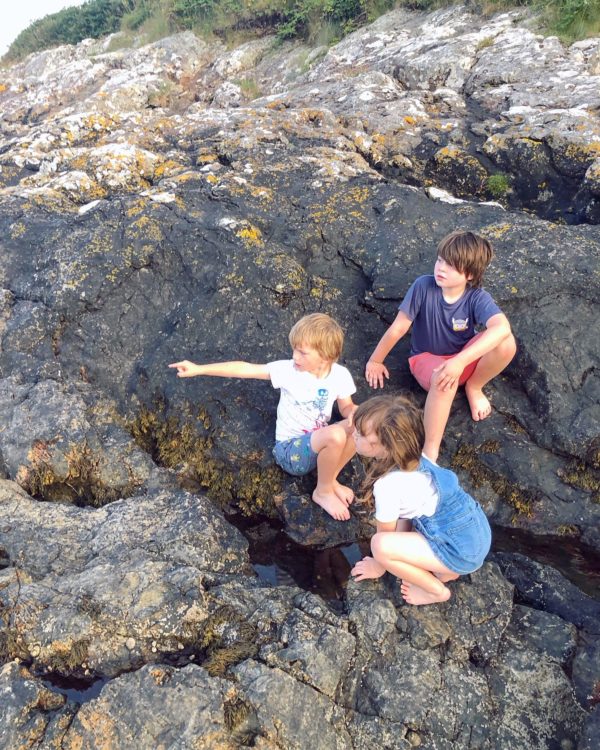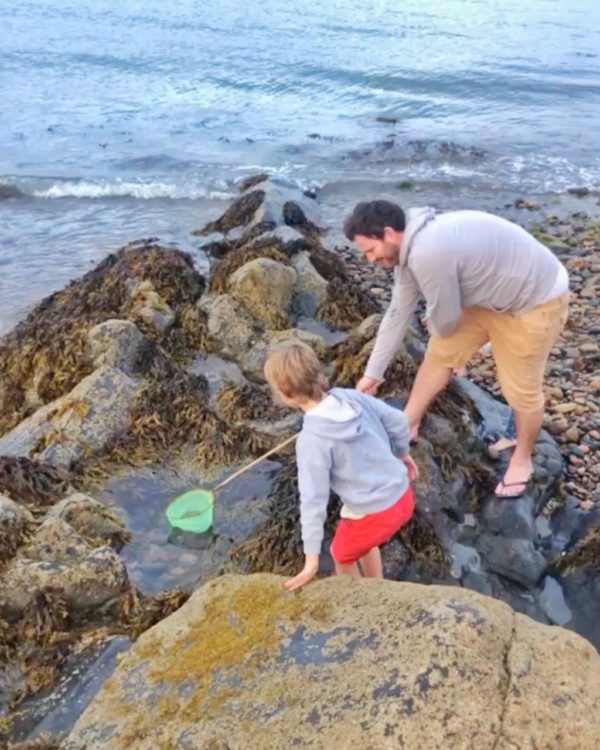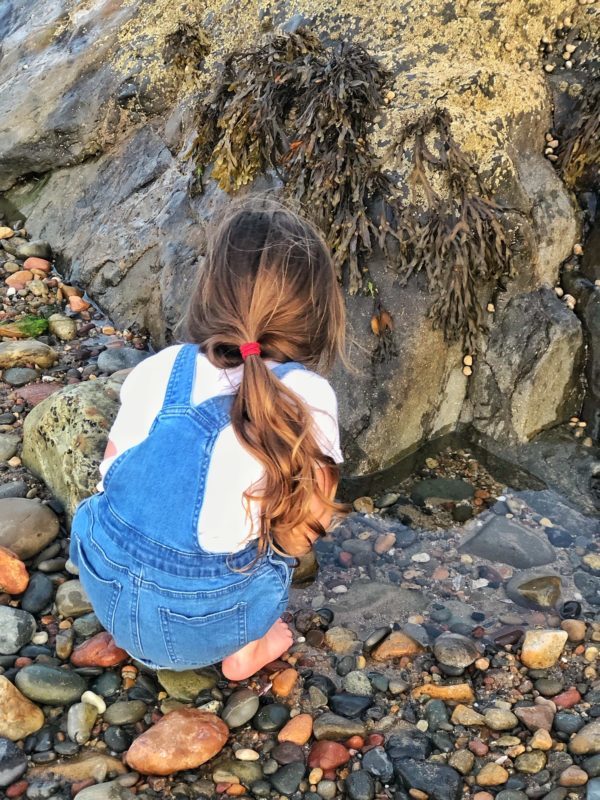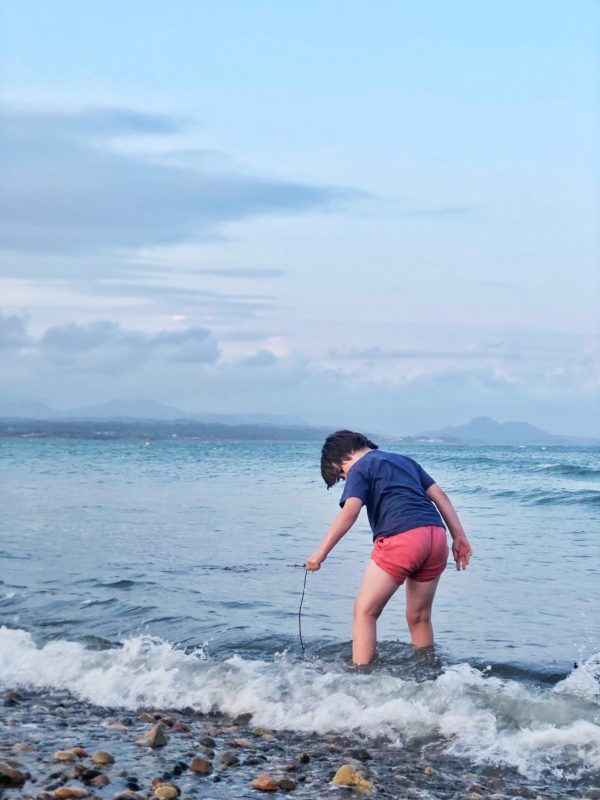Now that we can all get out a little bit more, I thought rockpooling might go on the summer holiday bucket list. I put it out there on my instagram to see if anyone felt that a rock pooling blog post would be useful and the response was huge – so here we are. I would just like to caveat that I rarely take my own advice, often meaning we go rockpooling and then have to have naked car journeys home (then not me, good lord, I’m not aiming to traumatise anyone) and a pile of wet clothes – but we have fun none the less. Rockpooling is one of our fave things to do, Toby especially, and we’ve been doing it since he was in nappies.
I’ve included a few resources at the bottom of the post to help you out if you want some more tips from the pros and printables for extra fun.
So, rockpooling tips:
1. Always have a bucket at the ready.
There are so many things to find in a rock pool so you should always have a bucket ready to store your finds for later examination or, as Toby puts it “creating an aquarium”. Clear, large crabbing buckets are the best as you can see errrrthang, but it doesn’t really matter. I found that if the boys have a little net it’s helpful but apparently it can damage little animals, so be aware of that. I used to think it was better for them to use their little hands, but many a crab has met it’s end thanks to Reuben’s shovel like mittens, so now, we stick with the net and just try to be gentle. The golden rule with rock pooling is that anything (other than pretty shells and pebbles) really has to go back into the pool. Please don’t be a dick and try to take home Mr Fishy, you’ll kill it even if have a tank or, in something out of my ultimate nightmare, it will jump out of the bucket in the car…
2. Be mindful of the tide.
Living so close to the beach, I guess I’ve grown up with this rule but it’s still hard to stick to when you get really into the rock pooling. The rocky verge of a beach can often be a way away from the steps off the beach and it often gets made into an island of sorts. Keep an eye on the tide to make sure that you don’t get boxed in. If you are going into any caves or anything, make sure you check the tide is out and be aware of what time it is scheduled to come in. Please bare this in mind – I’ve grown up cringing at none seaside families far out on the beach when the tide is making her way in, she comes fast and it wasn’t unusual to see people stranded.
3. Don’t let winter put you off, it can be even more fun!
It really doesn’t matter what time of year you go rock pooling, if you go in summer, stripping down to swimwear and some sandals (think swim shoes or crocs) is ideal, but winter can also be a fab time to rock pool. Just wrap up warm and cover yourself over with water proofs and wellies. Job done.
4. Start off at closest to the sea and move in land as the tide comes in.
The reason for doing this is because the rock pool dwellers are likely to be marine animals that require sea salt water so aren’t going to be in the pools further back for any long period of time. You will find more in the closer pools. Also, as I mentioned above, that tide… I can’t really stress it enough.
5. Lift up the rocks
Lift up rocks, move seaweed, just make sure you put everything back in place – it’s a little world (ecosystem if we’re being fancy pants) that you are peering into so replacing everything is a must.
6. Most beaches will have rockpools, you just have to look.
One of the questions I got asked a few times was how to find a beach for rockpooling – well most beaches will have little rock pools actually. Obviously the beaches that have little rocky areas protruding from the shore are the best, there is a list in resources for the best beaches according to the National Trust but honestly, every beach will have something.
Checklist:
- Change of clothes
- Swimwear
- Bucket & net
- Water shoes or crocs
- Towel
- Printed checklist of what to discover
Resources for printables, guides and more:
http://www.crew.ac.uk/sites/www.crew.ac.uk/files/documents/Rock%20Pooling1.pdf
http://www.sparklebox.co.uk/topic/living/rockpool-animals.html#.VZvFhUuKzwI
http://www.nationaltrust.org.uk/article-1355886690753/
http://www.marlin.ac.uk
http://www.bbc.co.uk/nature/habitats/Tide_pool
https://www.nationaltrust.org.uk/lists/best-beaches-for-rockpooling
I hope that this inspires you to give rock pooling a go, it’s so much fun and there is so much to learn!
Harriet x






